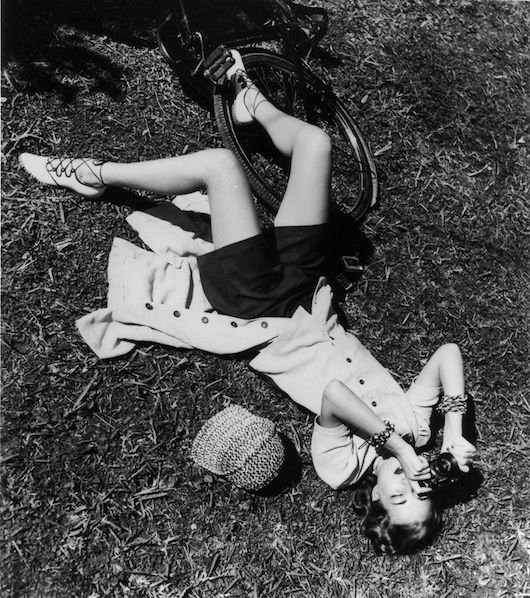
Predating the perhaps better-known Richard Avedon and Irving Penn was photographer Louise Dahl-Wolfe; her work influenced those two afore-mentioned artists. I've been making an effort to learn more about female photographers and Louise's work includes some of my favorite vintage photographs. From the 1930s through the 1950s she worked for Harper's Bazaar and for a few years before her retirement in 1960s she was a freelance photographer for Vogue and other periodicals. While she preferred portraiture to fashion photography she was known for her outdoor shoots using natural light and a style in locations distant from her NYC base that became known as "environmental" fashion photography. Looking at her work today we see a poise and precision to each shot rare in modern photographs. And while her figures always appeared glamorous, the models also seemed competent, from a 1987 retrospective of her work, "…more than any other fashion photographer of the 1940’s, she replaced the glamorous goddess in the gilded cage with an approachable, active woman with a sense of self…the woman coping so capably with wartime exigencies, participating in sports or traveling to foreign locations always elegantly attired and comfortably well-off…she was both forthright and feminine" Her studies of figure composition and architecture seem evident in her work with strong elements of composition and design characterized the look of Harpers Bazaar for two decades. She also knew the value of her aesthetic vision and gave up her career at the magazine when a new artistic director tried to influence her style--you have to admire someone who knows their worth.

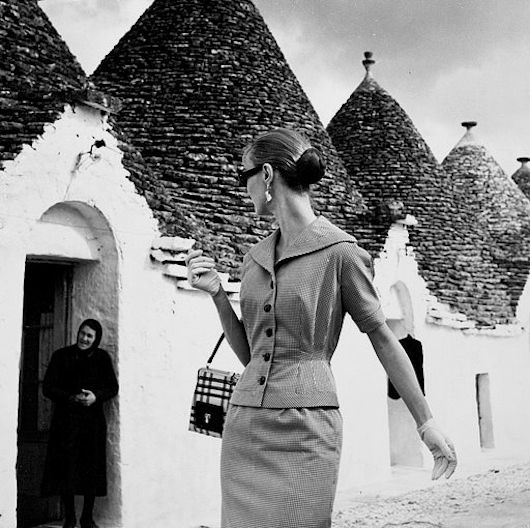
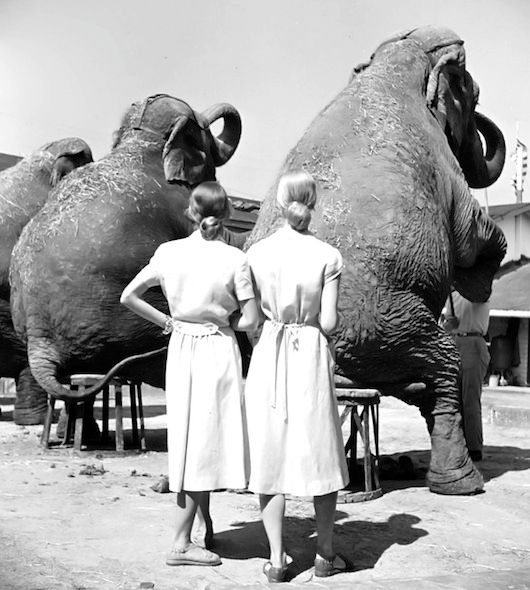
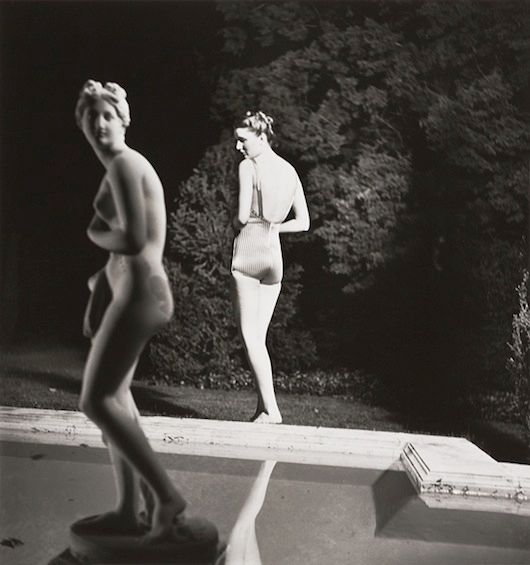 "I believe that the camera is a medium of light, that one actually paints with light. In using the spotlights with reflecting lights, I could control the quality of the forms revealed to build a composition. Photography, to my mind, is not a fine art. It is splendid for recording a period of time, but it has definite limitations, and the photographer certainly hasn’t the freedom of the painter. One can work with taste and emotion and create an exciting arrangement of significant form, a meaningful photograph, but a painter has the advantage of putting something in the picture that isn’t there or taking something out that is there. I think this makes painting a more creative medium." Louise Dahl-Wolf, 1984
"I believe that the camera is a medium of light, that one actually paints with light. In using the spotlights with reflecting lights, I could control the quality of the forms revealed to build a composition. Photography, to my mind, is not a fine art. It is splendid for recording a period of time, but it has definite limitations, and the photographer certainly hasn’t the freedom of the painter. One can work with taste and emotion and create an exciting arrangement of significant form, a meaningful photograph, but a painter has the advantage of putting something in the picture that isn’t there or taking something out that is there. I think this makes painting a more creative medium." Louise Dahl-Wolf, 1984



 "I believe that the camera is a medium of light, that one actually paints with light. In using the spotlights with reflecting lights, I could control the quality of the forms revealed to build a composition. Photography, to my mind, is not a fine art. It is splendid for recording a period of time, but it has definite limitations, and the photographer certainly hasn’t the freedom of the painter. One can work with taste and emotion and create an exciting arrangement of significant form, a meaningful photograph, but a painter has the advantage of putting something in the picture that isn’t there or taking something out that is there. I think this makes painting a more creative medium." Louise Dahl-Wolf, 1984
"I believe that the camera is a medium of light, that one actually paints with light. In using the spotlights with reflecting lights, I could control the quality of the forms revealed to build a composition. Photography, to my mind, is not a fine art. It is splendid for recording a period of time, but it has definite limitations, and the photographer certainly hasn’t the freedom of the painter. One can work with taste and emotion and create an exciting arrangement of significant form, a meaningful photograph, but a painter has the advantage of putting something in the picture that isn’t there or taking something out that is there. I think this makes painting a more creative medium." Louise Dahl-Wolf, 1984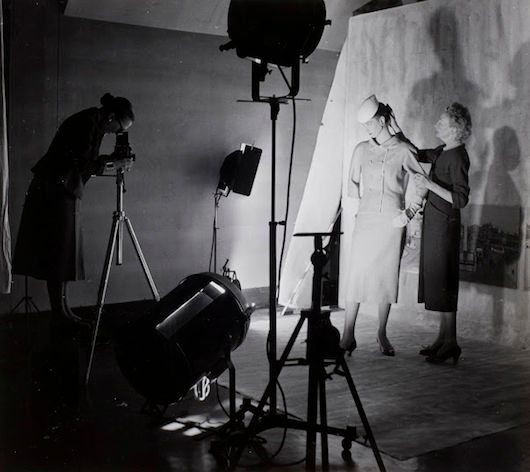
*Louise Dahl-Wolfe at work

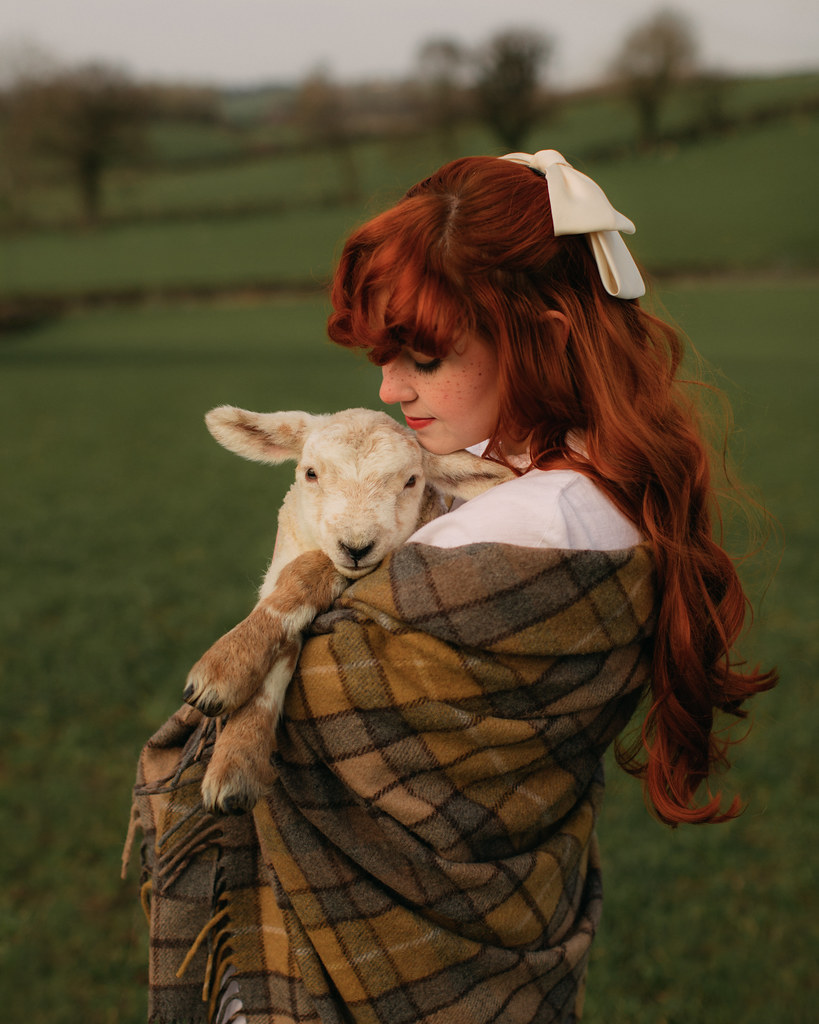



CONVERSATION